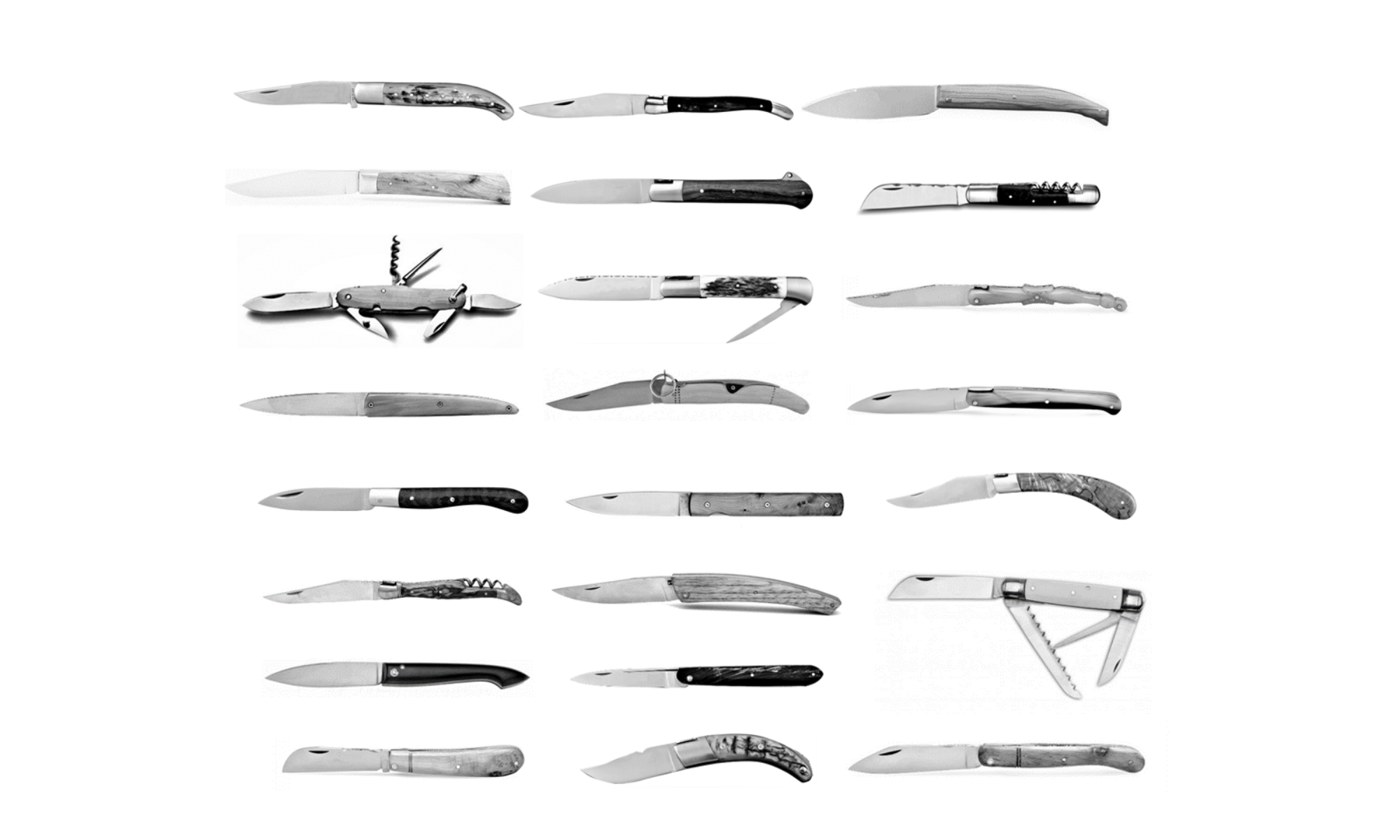
The Yatagan knife gets its name from the Yataghan, or yatağan, a short sword in use in the Ottoman Empire until the late nineteenth century.

The blade is inspired by the sword blade.


That shape was probably bring back by the Napoleonic troops after their Egyptian campaign and the “orientalism” trend of the nineteenth century made the type popular.


The blade shape was later used to give the Laguiole knife its actual form.
It is a simple slipjoint, with its characteristic clip point blade, usually with a half-stop, a slightly arched handle and sides usually made of cattle horn.


The type was mainly used in the South-west of France.
The Basque Yatagan

Among all those South-West users were some tobacco growers who used their Yatagan to cut-off damaged or dirty tobacco leaves. But the tobacco plants produce a thick sap that was covering the knife’s handle, making it slippery.

A seller from Bergerac had the idea to add 10 protruding rivets to the handle to create some sort of grip.
That created the so-called Basque Yatagan, sometimes called only Basque knife.

Some of today’s interpretations of the knife keep those 10 rivets, but letting it flush with the handle, to make it more comfortable.

An simple yet elegant worker’s knife.
Find the Yatagan and Basque knives on http://knives-of-france.com








